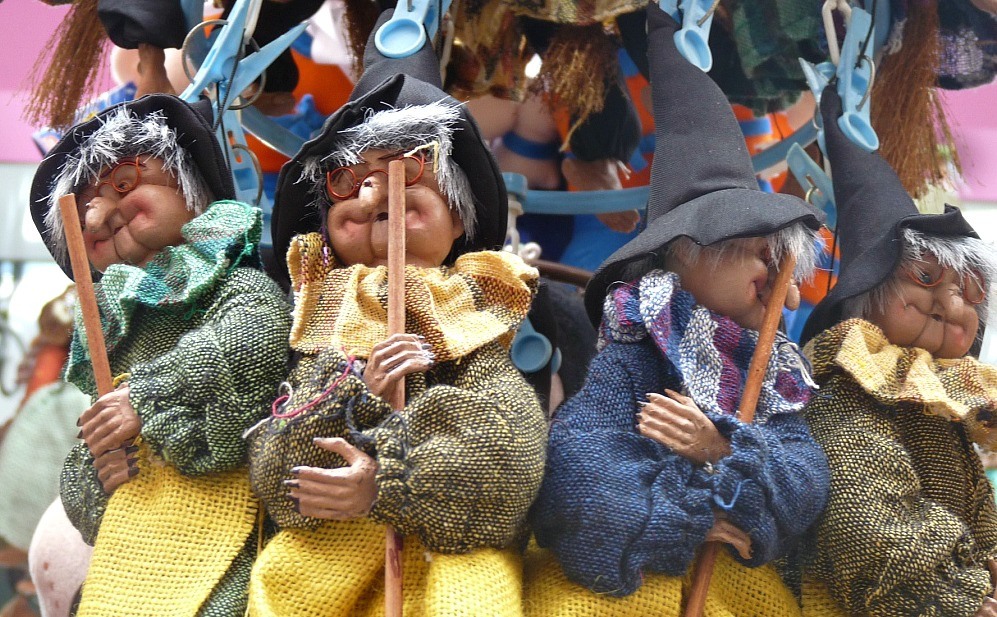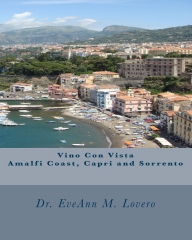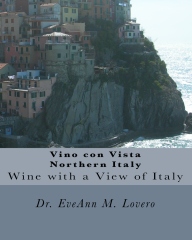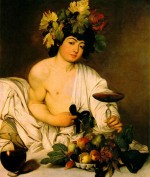
Image via Wikipedia
Italians embrace the holiday season with many seasonal market, events and festivals. There are many religious holidays between December and January. The festivities generally begin on December 6th with “La Festa di San Nicola” to honor St. Nicholas, the patron Saint of the Sheperds and end on January 6 with “La Festa dell’ Epifania” ( The Epiphany). Epiphany is the church calendar day that celebrates the visit of the wise men to Jesus (Matthew 2:1-12). It is commemorated on January 6, twelve days after Christmas Day. It also marks the end of the twelve days of Christmas.
The word epiphany comes from a Greek word epiphainein, which means “reveal.” There are three meanings or usages of the word. The first is the name of a Christian feast, Epiphany, which occurs in early January. The exact day depends upon the location and the culture of the church celebrating Epiphany, but most of the time, it occurs on January 6th, which is also referred to as Twelfth Night. The Epiphany feast celebrates the revelation of God Incarnate and the visit of the Magi to the infant Jesus.
Many times in the Old Testament, biblical characters were visited by “the angel of the Lord,” which some scholars believe to have been a pre-incarnate Christ, making all of these appearances Christophanies (Genesis 16:7-14; Genesis 22:11-18; Judges 5:23; 2 Kings 19:35). It is believed that these appearances foreshadowed the coming of Jesus Christ in human form, as “God with us” (Matthew 1:23). Other notable epiphanies include the call of Paul the Apostle on the road to Damascus (Acts 9:1-9), and the appearance of Jesus Christ to the Apostle John on the island of Patmos (Revelation 1:9-20).
For Christians around the world, the official end to the Christmas holiday occurs on Jan. 6; the Epiphany, or the 12th Day of Christmas, commemorates how a star led the Magi, or the three kings or wise men, to the baby Jesus.
Countries celebrate on the evening before and on the actual day with parades of decorative floats and people in costume as the kings bearing gifts. The festivities often feature light and music shows, and clowns and jugglers who throw candy to the crowds.
In the Bible the feast of the Epiphany is when the Three Wise Men arrive in Bethlehem bearing gifts for Baby Jesus on the 12th day of Christmas. On the 6th of January in Italy the Epiphany is celebrated, a feast linked to the adoration of the Wise men who came to Bethlehem following the comet twelve days after Christmas with the gifts for the Baby Jesus. In the Italian cultural history came the imposing figure of the Befana: the ugly but good old woman with a hooked and pimply nose who travels on a broom.

La Befana is a witch-like woman, or strega that the wise men invited, to join them on their journey to bring gifts to the Christ child.
This tradition in Italy includes the story of an ugly old witch called ‘La Befana‘ who comes on her magic broomstick on the night of January 5th carrying goodies for all the kids who have been good, and huge hunks of coal for those who have been naughty! La Befana remains adored by Italian children, who hang up their stockings in anticipation of gifts on the night between 5 and 6 January.
There is so much to do for the Epiphany in Rome. On Three Kings Day, the Artists’ Square comes alive and transforms into a marvelous spectacle of dancing, music and masquerades.
You can watch the procession of the parade “Viva la Befana” from Via della Conciliazione on the morning of January 6th. On Three Kings Day watch the Magi riding their camels. You also get to see chariots from the ancient Roman times and characters in full historic costumes.
The parade progresses to St. Peter’s Square where this Christmas tradition is celebrated. An Epiphany holiday is the ultimate way to celebrate your holidays in Rome.
January 6 2022 Holy Mass for the Epiphany of the Lord. Pope Francis usually presides over a Mass for the feast of the Epiphany
The Epiphany in Rome is a very special day, a feast for every child waiting for toys and sweets from La Befana, who leaves the loot in stockings hung from the chimney. The stockings are placed by windows or over fireplaces, with a glass of wine or some Christmas treats such as panettone or pandoro often left out as refreshments for La Befana.
Children who have been good normally receive sweets while those who have misbehaved will get lumps of coal – which these days can be black rock candy.
In the Italian capital there is usually a Befana Christmas market in Piazza Navona however it has not been held for two years due to the covid-19 crisis.
La Befana 2022
As a national holiday and a holy day, public offices will be closed across Italy on 6 January 2022, with most schools reopening either the next day or the following Monday.
After depositing her gifts, the soot-covered old hag is known for sweeping up the house before hopping
After Emperor Constantine adopted Christianity, instead of ending the holiday at the New Year, it was extended to the Epiphany. The Epiphany is the 12th day of Christmas when the three Wise Men gave gifts to Baby Jesus. December 8th is the Feast Day of the Immaculate Conception, a national holiday. Rome celebrates with floral wreaths and a ceremony at the Spanish Steps by the Pope.
Get a “Vino con Vista” tour of Rome while you listen to Dean Martin singing “Arrevederci Roma” http://www.youtube.com/watch?v=XlqTwYGCW8A
The primary symbol of the Christmas season is the “presepio”, the nativity scene. They depict the birth of Christ. It is believed that in the 13th century, St. Francis, a modest monk, created the first replica of the scene by portraying the child born in Bethlehem. He placed an ox and a donkey next to a manger near the hermitage he built in Greccio, near the town of Assisi.
By the 18th century, the patronage of King Charles elevated the status of “Il Precepio” to stratosperic levels. During the reign of Ferdinand IV of Bourbon, famous artists like Giuesspe Sanmartino were even commissioned to create the figures. Most of the prized figures made of terra cotta and wood are produced in the workshops of Naples on Via Gregorio Armeno.
Today, elaborate scenes are set up in churches throughout Italy. In some towns, living nativity scenes are usually staged when costumed participants wander through the streets.The first Christmas mass was conducted at the Church of Santa Maria Maggiore and the earliest known permanent Nativity Scene was created for the Rome Jubilee of 1300.
The Basilica di Santa Maria Maggiore is said to have the oldest permanent presepe, or nativity scene. It was carved in marble by Arnolfo di Cambio in the late 13th century, a commission for the first Rome Jubilee held in 1300. Although originally displayed in the church, the nativity is now in the museum of Santa Maria Maggiore. Below the altar is a reliquary said to contain pieces of the original manger. It’s kept in a niche in the same dimensions as the cave where Jesus was born. The first Christmas Mass was said to be held in Santa Maria Maggiore. When bells are rung at midnight, it signifies the start of Christmas.
The Church of Saints Cosma and Damiano, above the Roman Forum, displays one of the largest nativity scenes. Commissioned by Charles III of Naples, it includes not just religious figures but also intricate figures of people from everyday life. Six master woodcarvers worked on the scene for 40 years, adding new figures each year. Figures representing royalty are dressed in fine fabrics. This project started the Naples-style nativity, which still includes figures from everyday life. The city of Rome bought the nativity and restored it in the 1930s.
Vatican City erects a huge presepe in St. Peter’s Square for Christmas and is usually unveiled on Christmas Eve. A Christmas Eve mass is held in St. Peter’s square, usually at 10 pm.
The pope’s annual Christmas day address is called Urbi et Orbe, which is Latin for “to the city and to the world.” Addressing the crowd in St. Peter’s Square and around the globe through the media, the pope usually speaks in several languages and may use the opportunity to urge peace or address a current issue of concern.
He then gives his blessing to all those in the Square and people listening around the world.
In Rome, some of the biggest and most elaborate presepi are erected in Piazza del Poplo with 100 presepi on display from November 26th to January 6th www.presepi.it. Piazza Euclide, Santa Maria in Trastevere and Santa Maria D’Aracoeli on Capitoline Hill also host elaborate displays. A life-sized nativity scene is set up in Piazza Navona with a large Christmas Market from November 26th to January 6th with a Mercato della Bufana. The Church of Saints Cosma e Damiano has a large nativity scene from Naples on display all year long. It is located by the main entrance of the Roman Forum. Il Museo Tipologico is under the Church of Saints Quirico e Giulitta and has over 3000 figurines from all over the world. It is open each afternoon between December 24th to January 6th.
Gifts are exchanged on the day of the Epiphany. Children hang up their stockings on the evening of January 5th awaiting a visit from “La Befana” a legendary old woman who flys around on a broom bearing gifts. According to legend, the Three Wise Men asked La Befana for directions to Bethlehem but she declined. It took an unusually bright light and a band of angels to convince La Befana that she must join the Wise Men, but she was too late. She never found the Christ child and has been looking for him ever since. So on the January 5th, she goes out on her broom delivering treats to the sleeping children of Italy. The Santa figure in Italy is called “Babbo Natale”, Father Christmas. Charlemagne’s coronation took place in Rome on Christmas day in 800 AD.
A trip to the Vatican City for Christmas is very exciting. The Vatican City presepi in St. Peter’s Square and is usually unveiled on Christmas Eve. On Christmas Eve, the Pope celebrates midnight mass at St. Peter’s Basilica. On Christmas day in St. Peter’s Square at noon the Pope gives his blessing from the window of his apartment overlooking the Square to the crowds gathered at the Vatican. On December 8th, the Feast Day of the Immaculate Conception, the Pope leads a procession to honor the Virgin Mary near the Spanish Steps.
Stay in Rome for the New Year Parade on January 1st and the Epiphany tradition when hundreds of people in medieval costumes walk along the wide avenue leading up to the Vatican, carrying symbollic gifts for the Pope. The Pope says a morning mass in St. Peter’s Basilica to commemorate the visit of the Wise Men bearing gifts for Jesus.
In Rome, the traditional dish of Christmas Eve is “Capitone”, a big female eel that is roasted, baked or fried. Common Italian Christmas sweets are Panettone (a cake filled with candied fruit), torrone (nougat), and panforte (gingerbread).
Christmas in Italy includes Nativity Scenes and other Christmas Celebrations.
In December, Piazza Navona—Rome’s famous Baroque square—is transformed into a huge Christmas market. You’ll find stands selling all kinds of Christmas sweets, toys, nativity figures, decorations, and gifts. There’s a merry-go-round and Babbo Natale, Father Christmas, makes an appearance to delight the kids. A large nativity scene is on display in December as well.

Happy Holidays from Vino con Vista
Buon Natale and Happy Holidays from www.vino-con-vista.com























